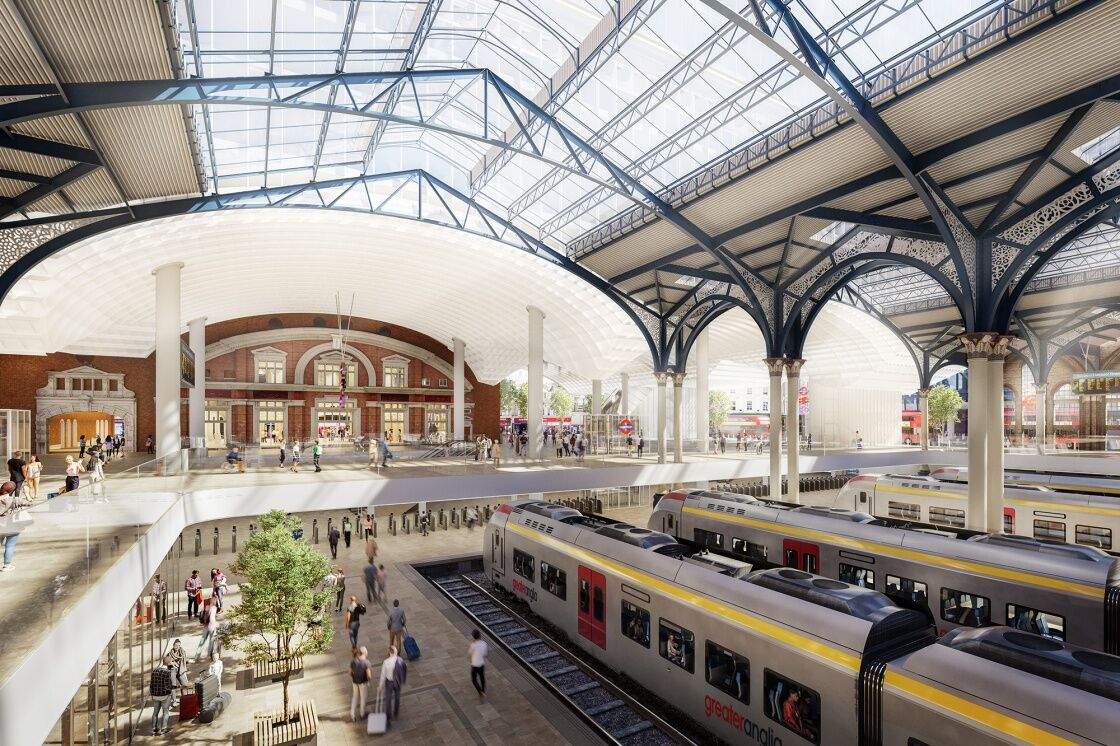Liverpool Street station between the past and the present
Built in the 1980s, Liverpool Street Station is a central London railway station connected to the London Underground station in the north-eastern corner of London.
Liverpool Street station was opened in 1874,
as a replacement for Bishopsgate station as the main station for the Great Eastern Railway in London.
It is the terminus of the West Anglia main line to Cambridge, and the Great Eastern main line to Norwich.
and passenger trains serving east London and destinations in eastern England,
and the Stansted Express service to Stansted Airport.

By 1895, it had the largest number of platforms of any London terminal.
However, during World War I, an air raid on the station killed 16 people on the site and a further 146 in the surrounding areas.
In the run-up to World War II, the station served as a shelter for refugee children arriving in London as part of the Kindertransport rescue mission.

The station was damaged by the Bishopsgate bombing in 1993.
During the July 7, 2005 bombing, seven passengers were killed when a bomb exploded on a subway train.
This was immediately after leaving Liverpool Street station.
New platforms for the Elizabeth Line will be opened in 2022 as part of the Crossrail project.

Design of Liverpool Street station
The Liverpool Street station was built as a two-level station,
combining an underground station with trains as well.
The underground station was opened in 1875 for the Metropolitan Railway;
Underground station service has now extended to the Central,
Circle, Hammersmith & City and Metropolitan lines.
Then six escalators were added to the station in order to direct visitors to the lobby located at platform level.

New expansions at Liverpool Street station
Over the past year, Swiss architecture studio Herzog & de Meuron took on a plan to overhaul London’s Liverpool Street station, which included adding two towers above the train station.
Making improvements to the station and railway infrastructure, such as adding 60% of ticket places,
And 1.5 acres of public and green spaces, and increased circulation areas, platforms and lobbies.
In addition to the improvements to the station,
two towers were constructed alongside it to accommodate approximately 78,038 square meters of office space and a hotel with an area of 17,651 square metres.

A curved white canopy instead of a glass and iron roof
The studio replaced part of the station’s glass and iron roof with a curved white canopy,
It extends to the southwest corner of the site to make way for the two-storey atrium.
The historic components and facade of the Grade II listed Andaz Hotel,
located next to the station, have been restored.
and adding roads leading to Station Square,
creating new public spaces and allowing the public access to its historic chambers, ballroom and Masonic Temple.






